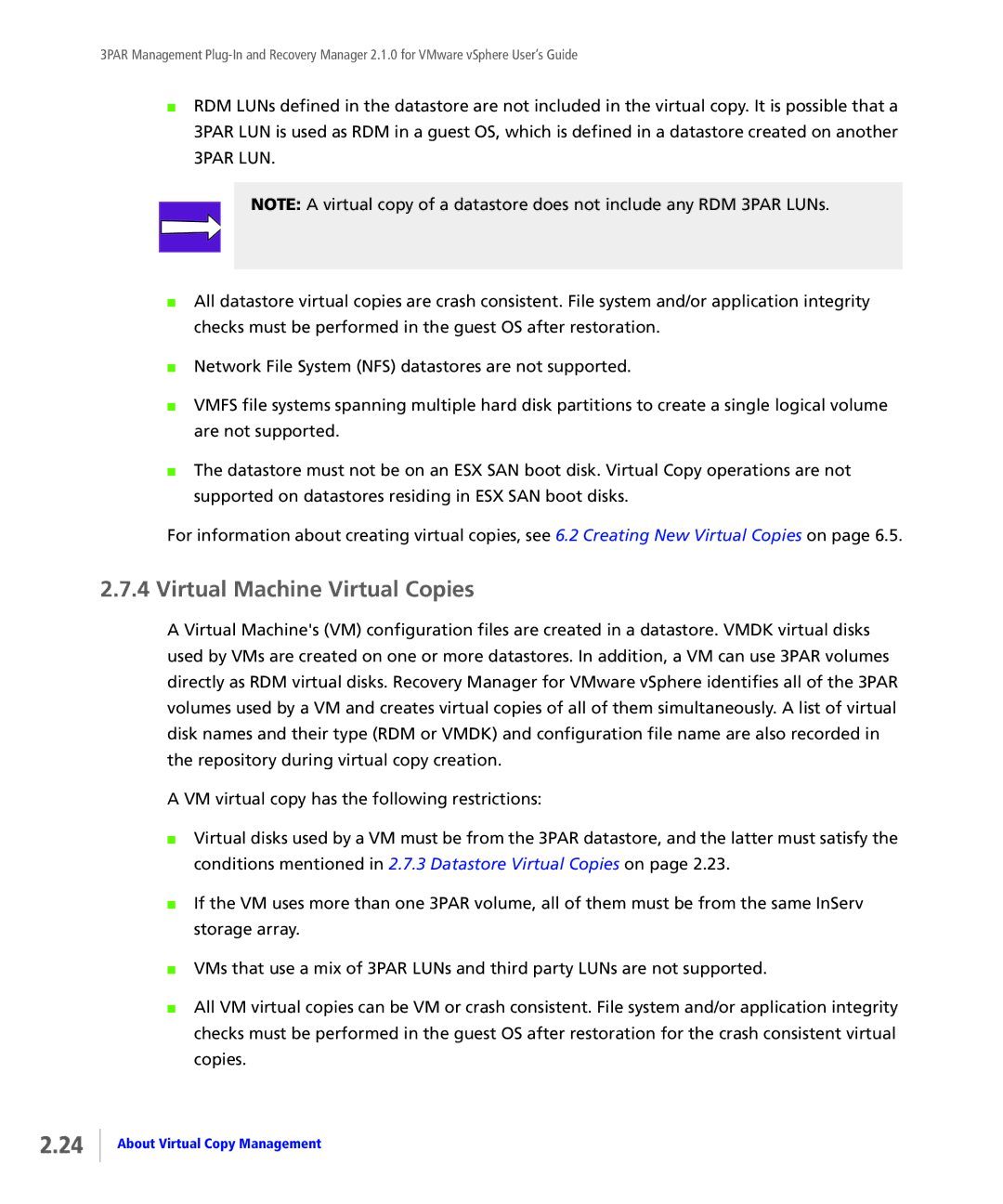
3PAR Management
■RDM LUNs defined in the datastore are not included in the virtual copy. It is possible that a 3PAR LUN is used as RDM in a guest OS, which is defined in a datastore created on another 3PAR LUN.
NOTE: A virtual copy of a datastore does not include any RDM 3PAR LUNs.
■All datastore virtual copies are crash consistent. File system and/or application integrity checks must be performed in the guest OS after restoration.
■Network File System (NFS) datastores are not supported.
■VMFS file systems spanning multiple hard disk partitions to create a single logical volume are not supported.
■The datastore must not be on an ESX SAN boot disk. Virtual Copy operations are not supported on datastores residing in ESX SAN boot disks.
For information about creating virtual copies, see 6.2 Creating New Virtual Copies on page 6.5.
2.7.4 Virtual Machine Virtual Copies
A Virtual Machine's (VM) configuration files are created in a datastore. VMDK virtual disks used by VMs are created on one or more datastores. In addition, a VM can use 3PAR volumes directly as RDM virtual disks. Recovery Manager for VMware vSphere identifies all of the 3PAR volumes used by a VM and creates virtual copies of all of them simultaneously. A list of virtual disk names and their type (RDM or VMDK) and configuration file name are also recorded in the repository during virtual copy creation.
A VM virtual copy has the following restrictions:
■Virtual disks used by a VM must be from the 3PAR datastore, and the latter must satisfy the conditions mentioned in 2.7.3 Datastore Virtual Copies on page 2.23.
■If the VM uses more than one 3PAR volume, all of them must be from the same InServ storage array.
■VMs that use a mix of 3PAR LUNs and third party LUNs are not supported.
■All VM virtual copies can be VM or crash consistent. File system and/or application integrity checks must be performed in the guest OS after restoration for the crash consistent virtual copies.
2.24
About Virtual Copy Management
